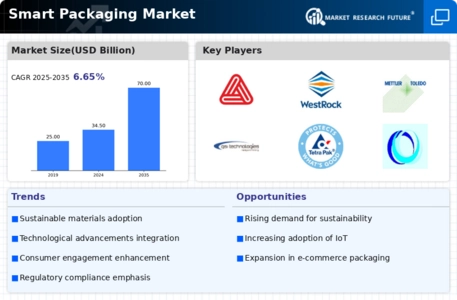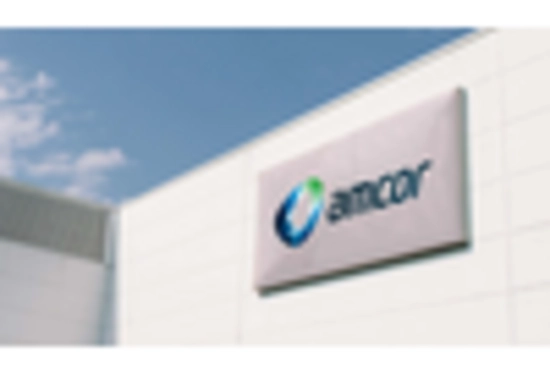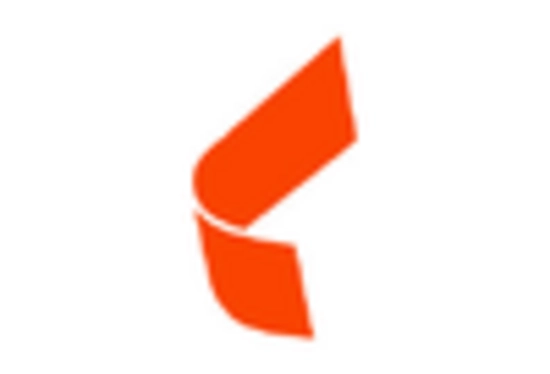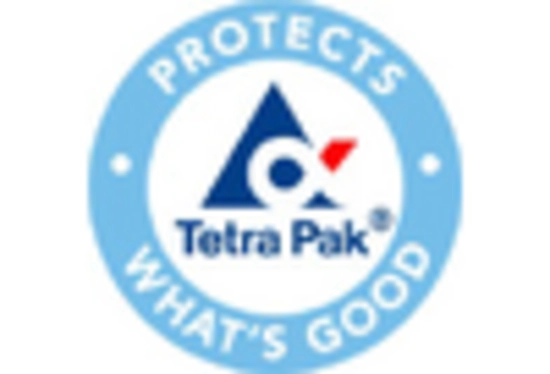Market Analysis
In-depth Analysis of Smart Packaging Market Industry Landscape
The smart packaging market is a rapidly growing sector driven by various factors that influence both supply and demand. Smart packaging, also known as intelligent packaging, refers to packaging solutions equipped with advanced technologies such as sensors, RFID (Radio Frequency Identification), NFC (Near Field Communication), and QR codes to provide real-time information about product freshness, authenticity, and usage. Market dynamics in the smart packaging market are shaped by several key factors.
A major restraint that companies in the smart packaging industry face are the fact that the pandemic forced many retail and grocery chain stores to restrict in-store shopping. This encouraged many people to seek online grocery shopping opportunities. One such example is Hello Fresh.
Firstly, technological advancements and innovations drive market dynamics in the smart packaging market. Manufacturers are continuously exploring new technologies and integrating them into packaging solutions to meet the evolving needs of consumers and industries. Innovations such as temperature sensors, moisture sensors, and gas sensors enable smart packaging to monitor product conditions such as freshness, shelf life, and safety. Additionally, smart packaging solutions with features such as tamper-evident seals, anti-counterfeiting labels, and interactive labels enhance product security, traceability, and consumer engagement, thereby driving market dynamics in the smart packaging market.
Secondly, changing consumer preferences and industry trends impact market dynamics in the smart packaging market. With increasing demand for convenience, safety, and sustainability, consumers are seeking products with smart packaging solutions that offer added value and functionality. Smart packaging solutions that provide real-time information about product ingredients, nutritional content, and allergen warnings meet consumer demand for transparency and product information. Additionally, smart packaging solutions that enable portion control, food waste reduction, and recycling support consumer preferences for sustainable and eco-friendly packaging options, further influencing market dynamics in the smart packaging market.
Moreover, market dynamics in the smart packaging market are influenced by regulatory requirements and industry standards. Regulatory bodies such as the U.S. Food and Drug Administration (FDA) and the European Food Safety Authority (EFSA) impose stringent guidelines regarding packaging materials, labeling standards, and compliance with regulations such as FSMA (Food Safety Modernization Act) and FIC (Food Information to Consumers) for food and beverage products. Compliance with these regulations is essential for manufacturers to ensure product safety, regulatory compliance, and consumer trust, thereby driving market dynamics in the smart packaging market.
Furthermore, competitive landscape and market consolidation are important factors shaping market dynamics in the smart packaging market. The market is characterized by the presence of numerous players ranging from small-scale packaging manufacturers to multinational corporations. Intense competition among manufacturers drives innovation, quality improvement, and cost optimization in smart packaging products and services. Market consolidation through mergers, acquisitions, and partnerships also influences market dynamics by reshaping competitive dynamics, market share, and pricing strategies in the smart packaging market.
Additionally, supply chain considerations impact market dynamics in the smart packaging market. The smart packaging industry relies on a complex supply chain involving raw material suppliers, packaging manufacturers, technology providers, converters, distributors, and end-users across various industries. Factors such as raw material availability, pricing, transportation costs, and lead times impact supply chain efficiency and pricing dynamics in the smart packaging market. Additionally, disruptions in the supply chain due to factors like natural disasters, geopolitical tensions, or global pandemics can affect market dynamics and lead to supply shortages or price fluctuations.

















Leave a Comment